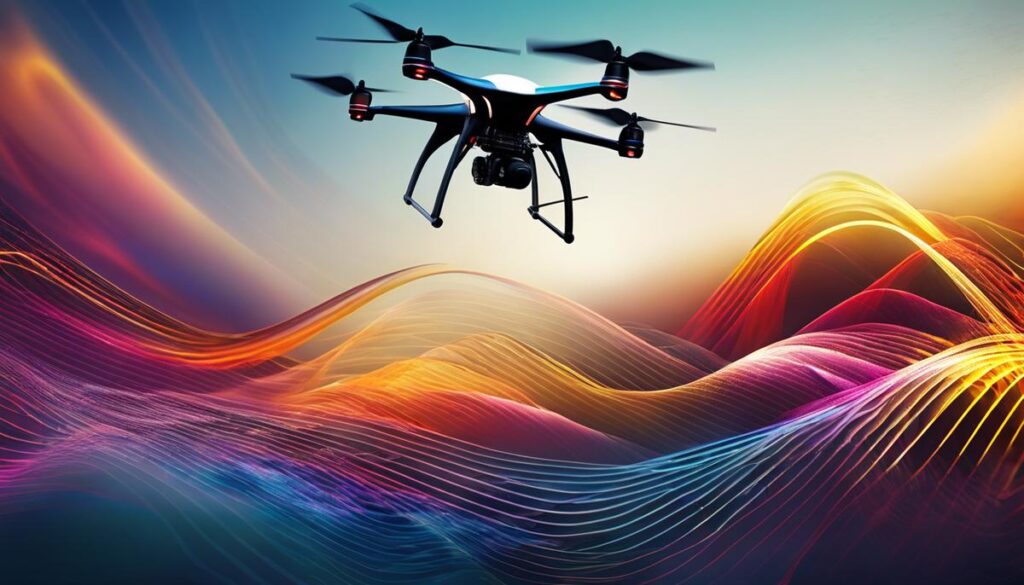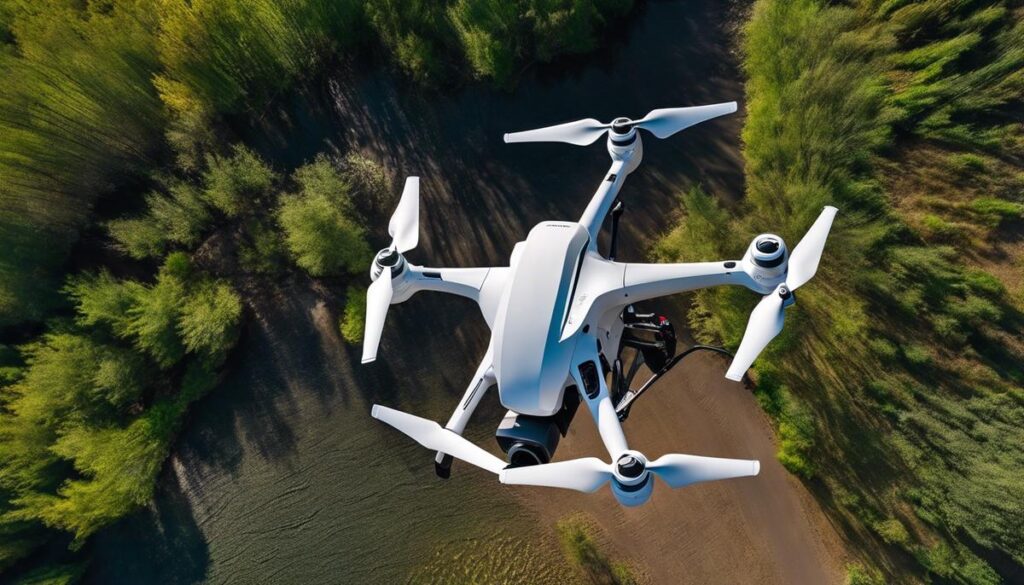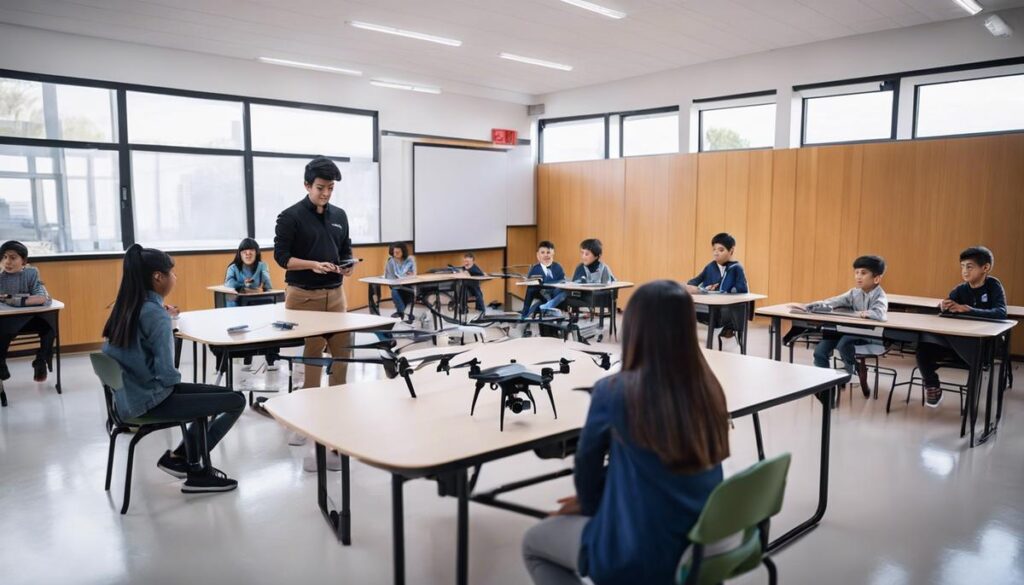Embarking on the thrilling journey through the world of FPV (First Person View) drones, enthusiasts quickly recognize that mastery over the intricacies of drone frequencies is a crucial element to the experience like no other. With the airwaves serving as the invisible highways for these technological marvels, a profound understanding of FPV drone frequencies not only enhances the piloting experience but also reinforces responsible and efficient flying practices. By delving into the basics, evaluating the advantages and limitations of various frequency bands, scrutinizing the technicalities of frequency bandwidth, and staying abreast of emerging trends, drone hobbyists can fully immerse themselves in the boundless potential of FPV flight. This essay serves as a comprehensive guide, illuminating the path towards expertise in harnessing the power hidden within the spectrum allocated for aerial innovation.
The Basics of FPV Drone Frequencies
Mastering the Sky: How to Choose the Perfect FPV Drone Frequency
When it comes to first-person view (FPV) drones, the transmission frequency isn’t just a number – it’s the lifeline between the pilot and the machine. The frequency choice is a critical decision that can make or break the piloting experience. Let’s cut through the haze and understand what really matters when selecting the right FPV frequency for your drone adventures.
Understanding Frequencies: The BasicsIn the world of FPV drones, 2.4 GHz and 5.8 GHz are the hot tickets. But why these numbers? It all boils down to physics. Lower frequencies like 2.4 GHz are the marathon runners; they go the distance, punching through obstacles with ease. But they’re not sprinters. Higher frequencies, such as 5.8 GHz, don’t have the same stamina for long ranges, but they’re quick and deliver higher-quality video feeds.
2.4 GHz vs. 5.8 GHz: Picking SidesAsk any seasoned FPV pilot, and they’ll tell you that each frequency has its battlefield. If you’re aiming to weave through a dense forest or navigate around urban decay, 2.4 GHz is your ally. Its waves are like prowling tigers, slipping through the thick underbrush of interference without breaking a sweat.
On the other hand, if you’re about lining up the perfect shot at a sun-drenched beach or racing against the clock in an open field, 5.8 GHz is your golden ticket. This frequency is your sprinter, offering less interference from other devices and a crystal-clear video feed, perfect for high-speed maneuvers and precision flying.
Balancing Act: Range vs. QualityThe choice isn’t always straightforward. Sometimes, you need to compromise. You might have to forego a little range for a clearer video or accept a tad more interference to avoid video breakup over longer distances. It’s important to weigh your specific needs against the backdrop of the physical environment you’ll be operating in.
Environmental Considerations: Frequency’s FoeConcrete jungles and natural fortresses alike are infested with signal-hungry obstacles. Before choosing your frequency, scout your environment. High-rise buildings? You’re likely to fare better with 2.4 GHz. Wide-open spaces? Go for the clarity offered by 5.8 GHz. Remember, the right frequency is the one that respects the lay of the land.
Regulatory Compliance: Play by the RulesLet’s not forget the law. The FCC has a tight grip on airwaves, and it’s got rules specifying which frequencies are fair game for FPV flying. Before locking in your frequency choice, ensure it’s legally permissible to use in your geographic region to avoid fines and maintain good standing in the FPV community.
In ConclusionThe quest for the perfect FPV drone frequency is a strategic dance of trade-offs and advantages. Whether you’re a daredevil racer or a meticulous videographer, understanding the strengths and limitations of your frequency options will arm you with the power to elevate your FPV experience. Choose wisely, and may your flights be ever stable and your video feeds ever clear.

Advantages and Limitations of Different Frequencies
FPV Frequencies: The Battle for Superior Airwaves
When you’re controlling a drone or enjoying a virtual race through the lens of your FPV (First Person View) goggles, the clarity and stability of your signal can make or break the experience. Enter the world of FPV frequencies, where wavelengths are the unsung heroes.
Signal Strength: The Power Player
Think of signal strength like a weightlifter; the more muscle, the heavier the lift. In the FPV frequency arena, this translates to the ability of your signal to push through obstructions – the stronger the signal, the fewer the glitches. Typically, lower frequencies, such as 900MHz, pack a powerful punch, gliding through barriers with the ease of a seasoned gymnast.
Interference: The Unwanted Guest
Let’s face it, interference is as welcome as a raccoon at a campsite. It ravages through your pristine signal like a tornado. High frequencies, beholden to their nature, offer swifter speeds but are prone to the chaos of interference. Remember, more devices chat on common frequencies like 2.4 GHz, creating a cacophony of signals. Less crowded options, like 1.2 GHz, minimize this digital chatter, crafting a cleaner canvas for your FPV escapades.
Antenna Size: The Compromise
Drones are already loaded with gear, and there’s a constant tug-of-war between equipment size and performance. Antennas for lower frequencies tend to be bulkier – after all, a larger antenna is the secret handshake for accessing those tenacious, lower frequency waves. High frequency systems, like those at 5.8 GHz, often boast more compact antennas, making them the sleek, low-profile option for the size-conscious enthusiast.
Resolution: The Image Maestro
High-definition feeds are the holy grail of FPV experiences. A 5.8 GHz system is your ticket to crystal-clear imagery, outperforming its lower-frequency counterparts. Yet it’s akin to a sprinter; breathtaking speeds over short distances. A lower frequency may not deliver the same visual crispness but offers a steadier, more reliable feed over greater distances.
Latency: The Speed Titan
Latency – the dreaded lag – can be the Achilles heel of an FPV adventure. Response time is critical when navigating through the thicket of an obstacle course. Higher frequencies generally boast lower latency, giving you the responsiveness needed to maneuver with surgical precision.
Choosing Your Champion
Every pilot has their preference; it’s a personal quest to find a frequency that mirrors their style. Perhaps you crave the long-range reliability of a 900 MHz system or the high-definition dominance of 5.8 GHz? The choice is yours, but remember, the perfect frequency is not just about raw specs – it’s about how it elevates your FPV journey.
The Verdict?
Thus, different FPV frequencies stand as titans in their own right, each with unique abilities to shape the quality of your flight experience. The path to selecting your ideal frequency is paved with trade-offs, but with thoughtful consideration, you’ll find the frequency that resonates with your technological heart. The skies await your command.
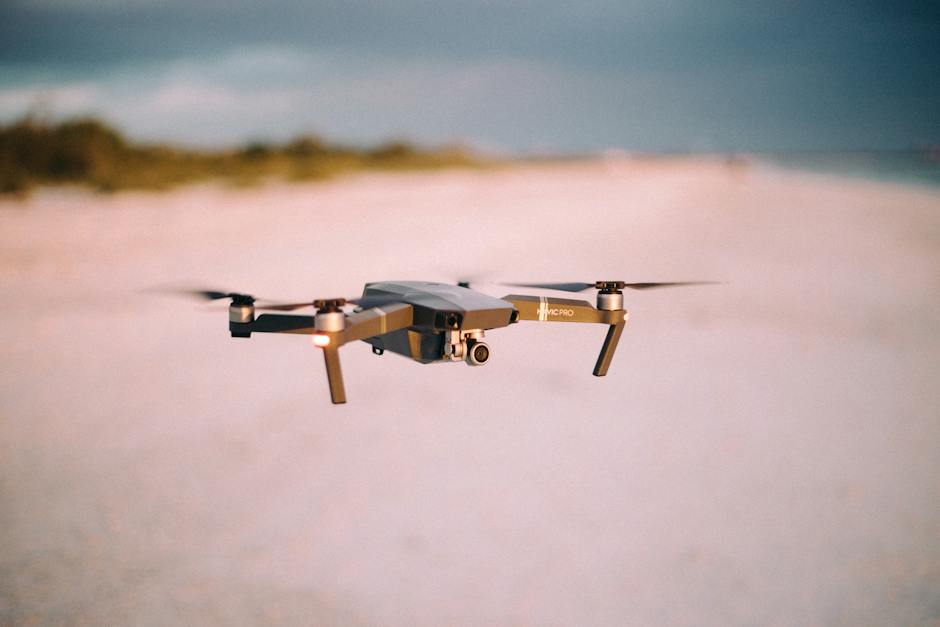
Technical Aspects of FPV Frequency Bandwidth
Decoding Signal Strength in FPV: Why it’s the Game-Changer
For those on the cutting edge of First Person View (FPV) tech, it’s clear that signal strength isn’t just a techy term—it’s the backbone of a staggering FPV experience. Strong signals equal uninterrupted flights and real-time action. Without ample strength, expect your video feed to drop faster than a drone without power. Amp up the signal to steer clear of these headaches.
Combatting Interference in the FPV Realm
When it comes to interference, the key is to understand that it’s all about clean flying. Even the most robust FPV setup can falter if competing signals are in the mix. Wi-Fi networks, other drones, even your own equipment can mess with the clarity of your FPV feed. Stay alert to common interference sources and plan your flights in ‘clean’ airspace when possible.
Why Antenna Size Matters
Antenna size and FPV gear performance are best buddies. The basic rule? Usually, a larger antenna means better reception. Just keep in mind, bigger isn’t always better when it involves portability and drone balance. Optimize antenna size to match your gear without sacrificing the drone’s integrity.
Resolution & Visual Clarity: View Your World Clearly
Crystal-clear images are not a luxury—they are an expectation. Higher resolution equals more detail and a deeper immersion into your FPV adventure. But remember, higher resolution demands more bandwidth. This means you’ll need a frequency that can support the high-quality data feed, without lagging behind.
Latency: The Make or Break of FPV Responsiveness
Low latency is the unsung hero of FPV. Essentially, it’s the delay (or lack thereof) between your controls and the drone’s response. Low latency means tighter turns and more accurate flights. High latency? Let’s not go there. It’s like trying to win a race with your shoelaces tied together.
Exploring the FPV Frequency Landscape
The world of FPV frequencies is diverse. Each frequency band offers its unique benefits. While some favor longer distances, others provide clearer video. It’s all about the mission at hand. Be it freestyle flying or racing, the decision on frequency can lead to winning or, well, not.
Choosing FPV Frequencies: Tailoring to Personal Preference
One size does not fit all in the realm of FPV frequencies. One’s perfect frequency is another’s problematic one. Consider your flight terrain, typical distance, and even the climate. What works for a calm, sunny day in an open field could be your downfall in a dense, signal-jamming forest.
The Paramount Importance of the Right Frequency
In the end, FPV thrills come down to the right frequency. The crux of carving through the sky with a drone’s eye view hinges on this critical choice. Pilots devoted to optimizing their frequency find their flights transformed from mere hovering to high-octane, high-definition escapades that defy gravity.
Remember, in FPV, frequency isn’t just a detail; it’s the conductor of your aerial symphony. Keep your tech savvy tuned to these crucial aspects, and you’re on track to a dynamic FPV journey. Fly smart, fly informed, and let the right frequency lift your FPV experience to new heights.

Photo by d_kuruvilla on Unsplash
Emerging Trends and Future Considerations in FPV Frequencies
Combatting Interference in the FPV Realm
For drone pilots and tech aficionados, maneuvering through the nuances of first-person view (FPV) technologies can be akin to threading a needle while skydiving – it requires precision, understanding, and the right equipment. A critical, yet often overlooked aspect is interference. It’s the invisible barrier that can wreak havoc on FPV experiences. With the right set-up and knowledge, this nemesis can be tackled head-on. Advanced filtering technology, smart channel selection, and dynamic frequency switching are the front-runners in combating unwelcome noise and maintaining a clean signal for an uninterrupted flight.
Why Antenna Size Matters
The FPV world is not just about frequency choice; the subtle art of antenna selection plays an outsized role in performance. While larger antennas could be seen as a nuisance, they’re often the gatekeepers of stronger signal reception and transmission. Understanding the relationship between antenna size, wavelength, and the resultant coverage area empowers users to tailor their equipment for maximum effectiveness, whether it’s for sweeping aerial cinematography or the adrenaline-fueled precision of drone racing.
Resolution & Visual Clarity: View Your World Clearly
Don’t let a pixelated view be the downfall of your FPV experience. As the eyes in the sky, resolution is pivotal for maneuvering through complex environments. High-definition systems are on the rise, bringing crisper visuals and more immersive experiences. But it’s not just about the pixel count. Frame rates, screen refresh rates, and image processing all conspire to elevate or degrade the quality of what’s seen. The quest for visual clarity is relentless, and technology advancements continue to push boundaries.
Latency: The Make or Break of FPV Responsiveness
Latency is the silent killer of response times in the FPV universe. In a domain where milliseconds matter, elevated latency can be the difference between a successful flight and an unanticipated crash. The pursuit of low-latency systems commands attention, driving a constant evolution in transmission technology. Digital systems are closing the gap on their analog counterparts, promising near-real-time feedback that’s critical for precision piloting.
Exploring the FPV Frequency Landscape
Venturing beyond the common 2.4 GHz and 5.8 GHz territories opens up a spectrum of possibilities. Each frequency band comes with its menu of pros and cons, shaped by factors like range, bandwidth, and environmental influence. New technologies are broadening this landscape, offering more tailored choices that align with specific uses, whether it be long-range exploration or obstacle-laden environments.
Choosing FPV Frequencies: Tailoring to Personal Preference
Picking a frequency isn’t a one-size-fits-all deal. It’s about curating a personal balance between distance, resolution, and reliability. This decision is influenced by pilot priorities, from those seeking maximum range to others prioritizing obstacle penetration in complex scenes. The decision matrix extends further to encompass equipment compatibility and future-proofing one’s gear choices against the ever-changing tech horizon.
The Paramount Importance of the Right Frequency
Finally, selecting the right frequency band doesn’t just enhance the FPV ride; it’s the bedrock of an optimized flight experience. The right choice ensures a resilient connection between pilot and drone, enabling the freedom to explore and the confidence to push boundaries. With the industry’s continuous growth and new advancements on the horizon, the importance of selecting the suitable frequency cannot be stressed enough – it is, essentially, the heartbeat of the FPV world.
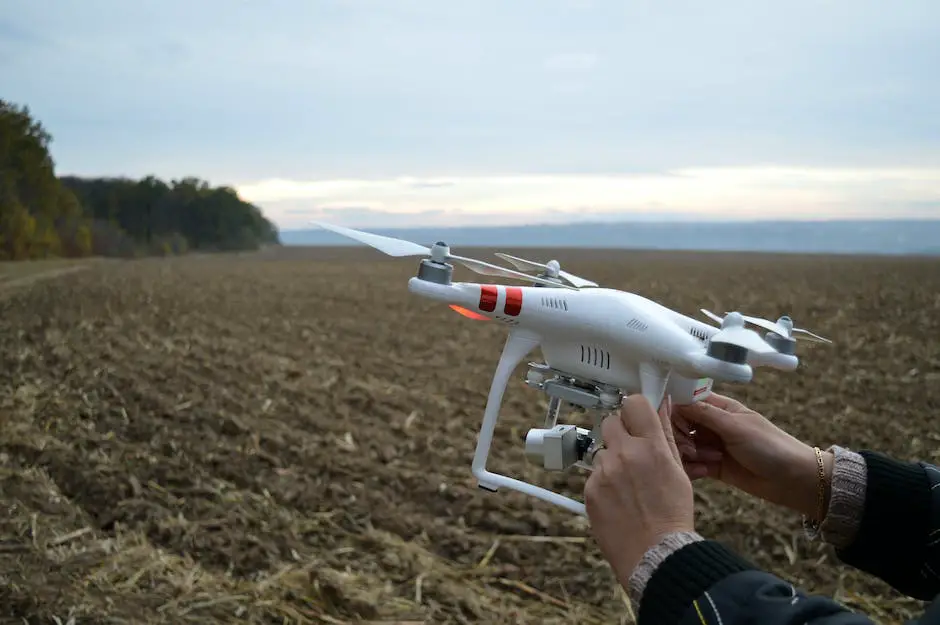
As we journey through the ever-evolving landscape of FPV drone technologies, our exploration of drone frequencies has equipped us with the knowledge to navigate the skies more adeptly. The insights garnered from understanding the technical nuances and the foresight into the dynamic trends shaping the future pave the way for enthusiasts to soar to new heights. Armed with this understanding, drone pilots are now better prepared to take the helm, expertly choosing their frequencies and adapting to the changing tides of regulations and technological advancements. May this newfound proficiency in the domain of FPV drone frequencies open up a horizon of possibilities for both flight and vision, connecting pilots closely to the airborne marvels they command and the wondrous experiences they yearn to achieve.

